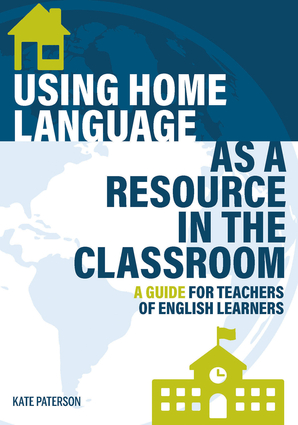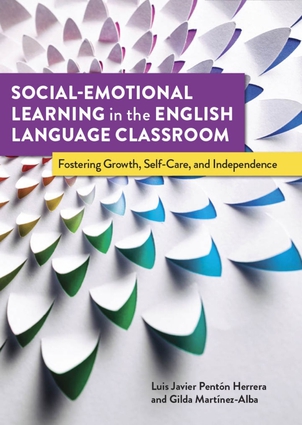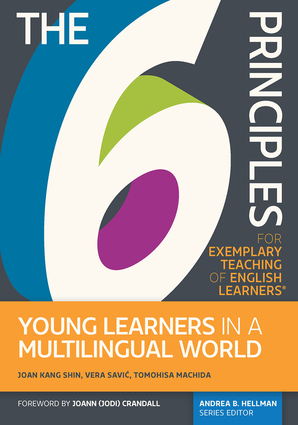Email Writing: 10 Classroom Activities
by Elena Taylor
 Today, I’ll share a few activities that you can use for helping students write an email in English.
Today, I’ll share a few activities that you can use for helping students write an email in English.
Activity 1
Compose two columns. In one column, write several phrases from different types of emails, and in the other column write the email types. Students will match the phrases with the types.
For example:
Phrases
- Please accept our apology for….
- I am writing to express my dissatisfaction with…
- I’d like to thank you for your…
- This is to invite you to join us…
- We are happy to inform you that you have been selected…
Email types
- A thank-you email
- An email of apology
- An email congratulating someone
- An invitation to a party
- An email of complaint
Activity 2
Prepare several phrases commonly used in formal emails, and sentences that express similar ideas. Students will rewrite the sentences by using the target phrases.
For example: Can you get back to me as soon as possible? (I would appreciate if you could…).
New sentence: I would appreciate if you could get back to me as soon as possible.
Activity 3
Prepare two emails with a similar purpose (e.g., an invitation to a party): one formal and one informal. Students will compare both emails by discussing: potential audience, email structure, language, tone, and stance.
Activity 4
Prepare several formal and informal phrases for each of the following communicative purposes (see below). Students will identify which phrases are formal and which are informal.
Making request/asking for information
Formal
- Could you please let me know…?
- I would also like to know…
- I would appreciate if you could…
Informal
- Would you mind sending…
- Can you call me…?
- Do you think you could…?
Offering help
Formal
- Should you need any further information, please do not hesitate to contact me.
- I would be glad to provide you with…
Informal
- Would you like me to…?
- How about we meet tomorrow and I help you with…?
Others
- Complaining
- Apologizing
- Giving information
- Asking for information
Activity 5
Prepare an email that violates rhetorical conventions (e.g., a formal email written in a sloppy manner or in a rude tone). Ask students to analyze the email, identify the violations, and rewrite the email in a correct manner.
Activity 6
Prepare several greetings and ask students to identify possible addressees and writer’s relationships with each of those addressees.
Activity 7
Students will write an email based on the rhetorical situation—purpose of the email, addressee, writer’s relationship with the addressee, and tone. You can also give students a list of phrases they can use in their email.
Activity 8
Prepare two emails: one is the original email and the other one is the reply to the original. Students will analyze the reply by discussing the structure of the reply, the phrases used, and the stance that the author took when replying to the original email.
Activity 9
Put students in pairs and ask each student to write an email to his or her partner. Students will read the email from their partner and respond to it accordingly.
Activity 10
Prepare an informal email with a particular communicative purpose (e.g., apologizing for a missed meeting). Give students a list of formal phrases that could be used in a formal email with the same purpose. Students will rewrite the original informal email to make it formal by using the target phrases.
*NOTE: This article first appeared in the TESOL Blog, 15 April 2016.
Elena Taylor is an assistant professor at Utah State University. Her research interests include second language writing, multimodal interaction, interpersonal aspects of language teaching, and teacher professional development.
TESOL Blogs
Interested in writing a blog for TESOL?
Read the submission guidelines and send us your post!
Check out some of the most recent TESOL Blogs:
|
6 More Ways to Cultivate Belonging in the Classroom, by Naashia Mohamed

Following on from my last post about cultivating belonging in the classroom, I’d like to share a few more simple ways that teachers can help students feel a greater connection to the school. When a student feels accepted for who they are, is treated with respect, and feels supported by their peers and other members of the school community, they will feel a sense of inclusion. This is particularly important for children and young people who come from backgrounds that may be different from the majority of students in the school. Read more. |
|
6 Questions to Ask When Designing Teacher PD, by Laura Baecher

Last month, I paid homage to a number of dead ideas in professional development (PD), and they offer a great guide in thinking about what not to do! But what should we be doing? In this blog, I suggest six conceptual questions to consider if you are in the position of advising on, shaping, or making choices about the PD plan in your institution. These are the considerations—often skipped over—that lead to deeper and more impactful professional learning outcomes. Read more. |
|
STEM and ELT: 7 Science Reading Strategies, by Darlyne de Haan
 There is growing interest in how to teach English learners (ELs) science in the general education classroom especially because science contains a lot of reading and academic language. The strategies I discuss here, including the four strategies from Part 1 of this series, are intended for you to use immediately use in your classroom. The nine strategies come from the 2008 book Science for English Language Learners: K-12 Classroom Strategies (edited by Fathman & Crowther). Because of the depth and breadth of the reading skills strategy, today we will only be focusing on Skill 5 (Reading Skills), the fifth of the nine strategies to help ELs learn science. Read more. There is growing interest in how to teach English learners (ELs) science in the general education classroom especially because science contains a lot of reading and academic language. The strategies I discuss here, including the four strategies from Part 1 of this series, are intended for you to use immediately use in your classroom. The nine strategies come from the 2008 book Science for English Language Learners: K-12 Classroom Strategies (edited by Fathman & Crowther). Because of the depth and breadth of the reading skills strategy, today we will only be focusing on Skill 5 (Reading Skills), the fifth of the nine strategies to help ELs learn science. Read more.
|
TESOL Bookstore

Featured Resources from TESOL Press
 Using Home Language as a Resource in the Classroom: A Guide for Teachers of English Learners
Using Home Language as a Resource in the Classroom: A Guide for Teachers of English Learners
Kate Paterson
What can educators do right now, in their own classrooms, to support students of varied cultures and languages? Written for current and future teachers of ELs across various educational and geographical settings, this concise guide provides educators with specific instructional practices to promote greater inclusion and educational equity for their students. Key topics covered in this book include: why home language is essential to student success; incorporating home language into instruction; planning plurilingual lessons and inclusive classrooms; home language and learning in the digital age; reimagining instructional materials; and using home language to advance social justice.
 Social-Emotional Learning in the English Language Classroom: Fostering Growth, Self-Care, and Independence
Social-Emotional Learning in the English Language Classroom: Fostering Growth, Self-Care, and Independence
Gilda Martinez-Alba and Luis Javier Pentón Herrera
While SEL is becoming increasing critical for learners’ success, teachers often feel unprepared to incorporate or address it in their classrooms. This book serves as a practical, concise, and easy-to-follow reference that English language teachers in K-12 and adult education and English language teacher educators can use in their classrooms. It is one of the limited emerging SEL resources available that is tailored to the English language teaching field and contributes to filling the existing gap of SEL in English language education. Teachers will be equipped with the necessary knowledge and skills to practice self-care and be confident in implementing SEL in their learning spaces to support and benefit their learners.
 The 6 Principles for Exemplary Teaching of English Learners®: Young Learners in a Multilingual World
The 6 Principles for Exemplary Teaching of English Learners®: Young Learners in a Multilingual World
Joan Kang Shin, Vera Savic, and Tomohisa Machida
This book guides educators in teaching young learners (2- to 12-year-olds) in an English as a foreign language setting by using The 6 Principles for Exemplary Teaching of English Learners® as a framework. A core set of principles for the exemplary teaching and learning of English as a new language, The 6 Principles and their recommended practices are targets of teaching excellence that provide teachers with the knowledge to improve instruction and assessment. Instructional techniques are illustrated throughout the book with numerous classroom examples, case studies, checklists, and vignettes.